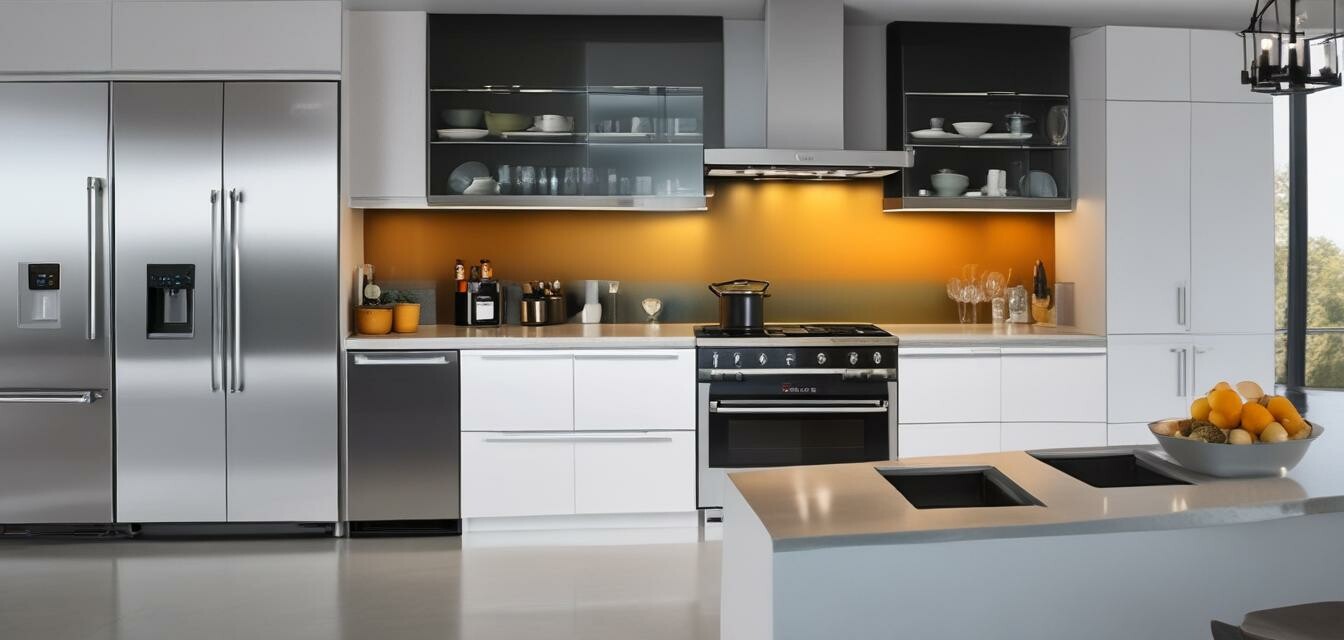
The Evolution of Kitchen Appliances: Trends Through 2025
Key Takeaways
- Kitchen appliances are evolving towards greater connectivity and smart functionality.
- Sustainability is becoming a dominant theme in kitchen technology.
- New innovations focus on energy efficiency and user-friendly designs.
- Tactile interfaces and touchless technology are expected to shape the future of cooking.
- Smart home integration is set to revolutionize daily cooking tasks.
The landscape of kitchen appliances has transformed dramatically over the last few decades. As technology advances, so do the gadgets we rely on to make cooking more efficient and enjoyable. In this article, we will delve into the evolution of kitchen appliances, examining key innovations and upcoming trends expected to take shape by 2025 and beyond. Whether you are a culinary aficionado or just someone looking to streamline your meal prep, there's something for everyone in the world of high-tech kitchen gear.
History of kitchen appliances
Understanding the evolution of kitchen appliances requires a look back at their origins. From simple ovens to complex integrated systems, the changes are notable. Let's break down the key milestones in kitchen technology:
| Year | Milestone | Impact |
|---|---|---|
| 1900s | Introduction of electric appliances | Revolutionized cooking, reducing manual labor |
| 1950s | Microwave technology emerges | Changed cooking habits, increased efficiency |
| 1990s | First smart appliances | Connected devices pave the way for automation |
| 2020s | Smart home integration | Seamless control of kitchen tools via apps |
Current trends in kitchen technology
As we approach 2025, several trends have begun to surface in the kitchen appliance industry. The following are the prominent ones to watch:
- Smart connectivity: More appliances are being developed with Bluetooth and Wi-Fi capabilities, allowing control via smartphones.
- Energy efficiency: An increasing demand for appliances that consume less energy is shaping manufacturing priorities.
- Touchless technology: Devices featuring sensors that react to motion are growing in popularity, enhancing hygiene and convenience.
- Integration with smart home systems: Seamless communication between kitchen appliances and other smart home devices is becoming standard.
- Sustainable materials: Eco-friendly materials and design practices are trending as consumers become environmentally conscious.
Upcoming innovations
The future of kitchen appliances looks bright, with innovations on the horizon that are likely to redefine cooking experiences. Below are some anticipated advancements:
| Innovation | Expected Benefits | Examples of Application |
|---|---|---|
| AI-integrated appliances | Predictive cooking and personalized meal planning | Smart ovens that adjust settings based on the dish being prepared |
| Advanced automation | Reduced culinary workload for users | Robotic arms that can cook meals |
| Voice-activated technology | Hands-free control of kitchen tasks | Voice-activated ovens and refrigerators |
| Virtual cooking assistants | Guidance through complex recipes in real-time | Interactive screens that display step-by-step cooking instructions |
The role of sustainability in kitchen appliances
The trend toward sustainability is significant as manufacturers strive to produce eco-friendly options. Addressing climate change and reducing waste are becoming paramount in the design of kitchen appliances. Here are some ways sustainability is being integrated:
- Use of recycled materials in manufacturing processes.
- Energy-efficient designs that minimize power consumption.
- Smart appliances that optimize resource use and reduce waste.
- End-of-life recycling programs for old appliances.
How to prepare for the smart kitchen of the future
As you consider upgrading your kitchen appliances, it’s important to understand how to embrace these technological advancements. Here are tips for a smooth transition to a high-tech kitchen:
Tips for a smart kitchen upgrade
- Assess your current appliances and identify what you could replace or upgrade.
- Research appliances that offer smart technology and connectivity options.
- Consider energy-efficient models to save money in the long run.
- Stay informed about the latest trends by visiting our News and Trends section.
- Engage in online communities for reviews and experiences with new products.
Conclusion
The evolution of kitchen appliances continues to thrive as technology advances, catering to a world that values convenience, sustainability, and efficiency. As we look ahead to 2025, it's crucial to stay informed about trends and innovations that will shape how we cook and minimize our environmental impact. Embracing smart technology not only enhances our culinary experiences but also aligns with the global move towards sustainable living.
Pros
- Increased efficiency and convenience in meal preparation.
- Greater energy savings with modern appliances.
- Enhanced user interface through smart technology.
- Improved hygiene through touchless features.
Cons
- Initial costs can be higher than traditional appliances.
- Dependence on technology may lead to frustrations if systems fail.
- Continuous updates and learning curves for new systems.